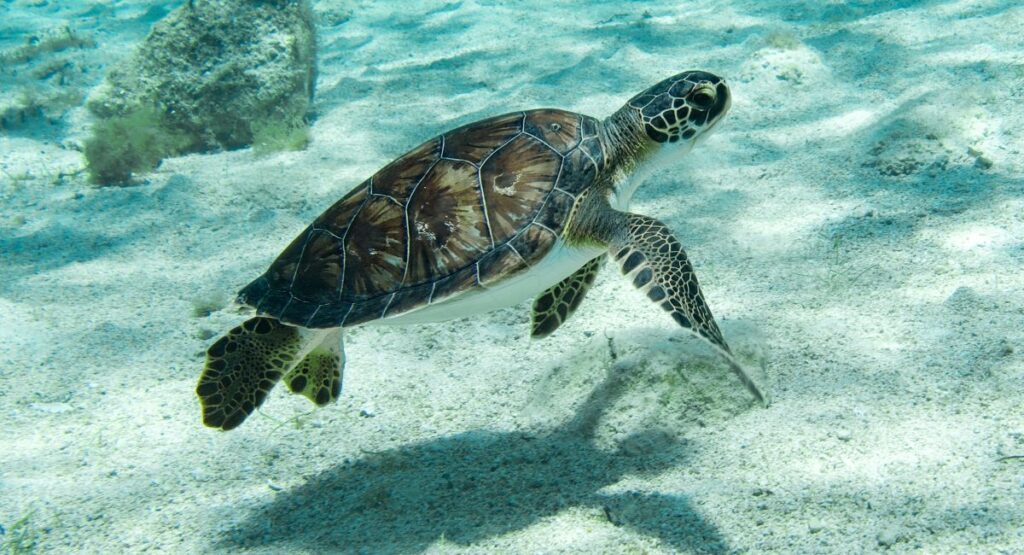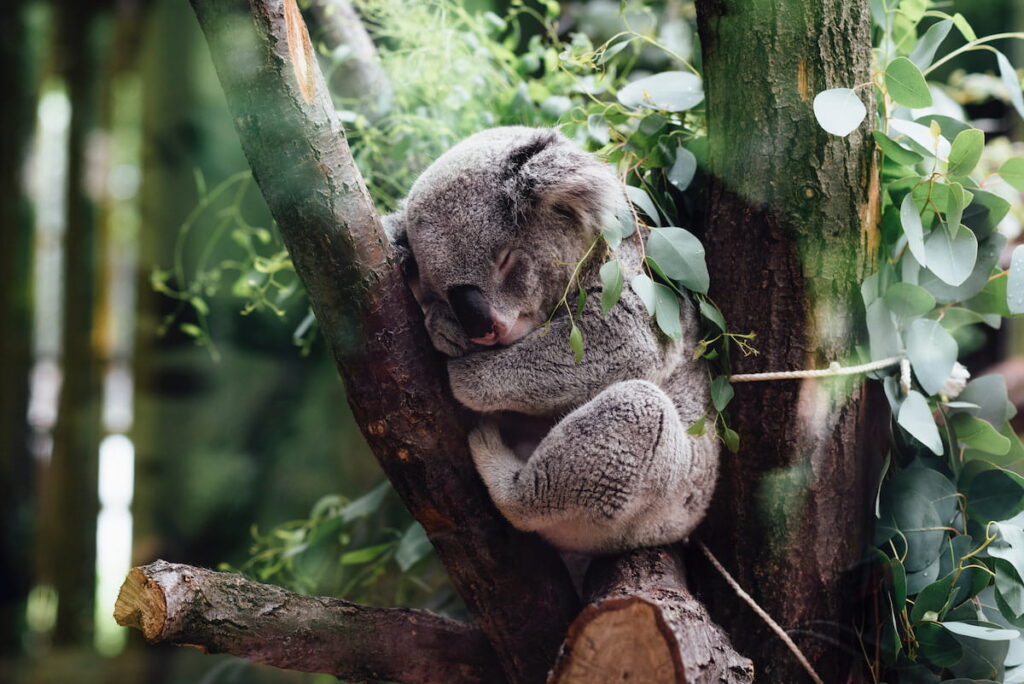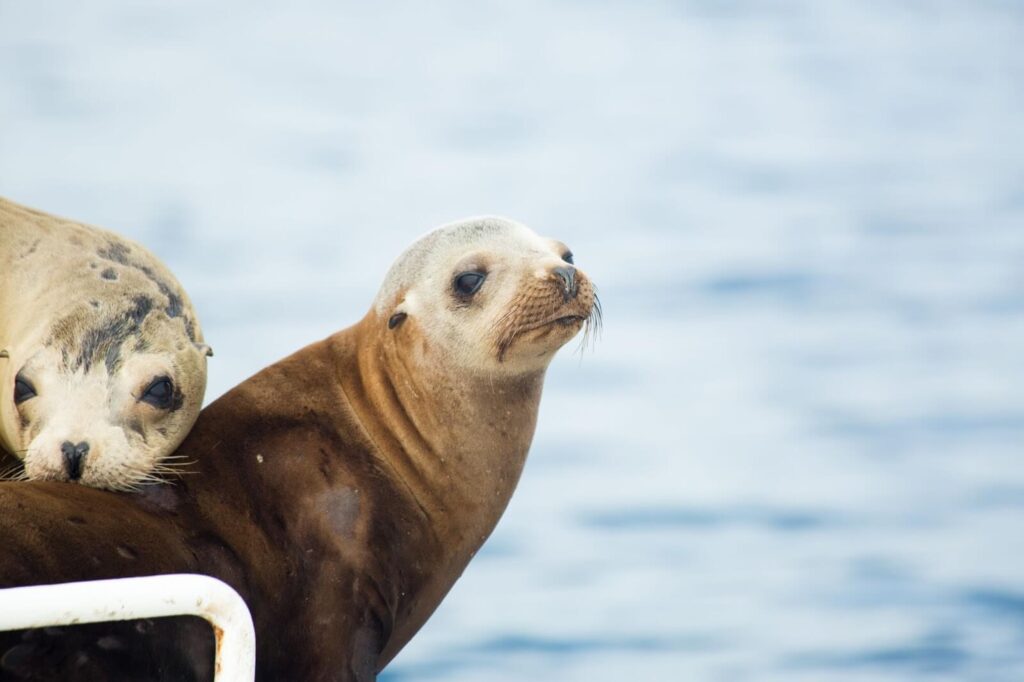The island of Grand Cayman is home to a wide variety of wildlife, including many endangered species. The government and local organizations have worked hard to protect and preserve the natural habitat of the island’s wildlife. As a result, Gran Cayman is now one of the best places in the world to see rare and exotic animals in their natural environment.
In this post, we will tell you about some of the wildlife that you can find in Grand Cayman. We will also give you some tips on where to see animals in their habitats so that you can have the best wildlife experience possible.
Gran Cayman wildlife is not only unique but also highly diverse. Some of the very special wildlife you can see on the island include the Blue Iguana, West Indian manatee, and the iconic Grand Cayman parrot.
The reptiles of Grand Cayman Island
Blue Iguana
Photo by Felix Serre on Unsplash
The Blue Iguana is especially beloved by locals and tourists alike, as it is the national animal of the Cayman Islands. The Blue Iguana is a large lizard that can grow up to five feet long and weigh up to 20 pounds. They are blue-gray in colour with black spots and have a long tail.
Blue Iguanas are one of the most popular animals on the island and can be seen in many places, including the habitat at the Queen Elizabeth II Botanic Park. The park is open to the public and it is a great place to see these iguanas in their natural habitat.
The Habitat is a popular area for these fascinating creatures who only two decades ago faced extinction. Frequently found freely roaming the grounds, both local and foreign visitors enjoy seeing them in their natural habitat – The Blue Dragons delighting everyone that comes across this wonderful sanctuary!
Sister Islands rock iguanas
Sister Islands rock iguanas can only be found in Little Cayman and Cayman Brac. The Department of Environment is keeping a careful eye on the SIRI population, which is also classified as “critically endangered” (DoE). The invasive green iguana, a problem on all three islands, poses a danger to both endemic species, which the DoE is also actively monitoring.
Sea Turtles
The three turtle species that call the Cayman Islands home are fascinating creatures. Not only do they nest on the Gran Cayman beaches, but it’s also possible to have turtle encounters while snorkelling or scuba diving!
Green turtles can be found throughout all seasons and habitats- even waters off Seven Mile beach where loggerheads live too; whereas hawkbills have limited ranges geographically (lying mainly outside of Florida).
Sea turtles usually go through five major life stages: egg laying phase(May/June), incubation period (about 60 days) hatchlings emerging onto sandy shores under Parents’ guidance(July to November).
The Cayman Islands were once home to nearly extinct turtles, but thanks in part due to conservation efforts now breeding programs are seeing success.
The blue-throated anole
Other terrestrial reptiles range in size from iguanas to other smaller species. The blue-throated anole, a little lizard that is just 7 cm long but with a whip-like tail that is almost three times as long, is the most impressive of them. Males can have a magnificent pattern of white dots and can be a vivid turquoise or even green in colour. Although they have vibrant colours, they are arboreal (dwell in trees) and can be difficult to see. However, the Mastic Trail on Grand Cayman is a wonderful site to look for them.
There are several snake species (none of which are venomous), as well as, of course, turtles, the abundance of which led Columbus to first refer to these islands as Las Tortugas. Hawksbill turtles can be observed when snorkelling or scuba diving, and green and loggerhead turtles lay their eggs on beaches all around the islands.
The birds of Grand Cayman Island
The birds of the Cayman Islands are a fascinating study in themselves. The most famous inhabitant is likely their Grand Cayman parrot, with its raucous squabbling that can be heard nearly everywhere you go on the island and Bananaquits who come to feeders whenever they please. Other birds you might see on the island include herons, egrets, and ospreys.
Grand Cayman parrot
The Grand Cayman parrot is the only endemic bird on the island and is the national bird of the Cayman Islands. These parrots are bright green with red breasts and blue wings. They are about the size of a crow and can be found in the forests of Grand Cayman – though it may only last for brief glimpses as numbers have decreased due to recent events such as hurricane Paloma wiping out over half (600)of this unique population just five years ago!
The Grand Cayman parrot is a protected species and can be seen in the Queen Elizabeth II Botanic Park.
Frigatebird
If you’re lucky enough to spot a magnificent frigatebird, be sure not to miss its incredible aerial agility. With an upright posture and huge wingspan of up 2 meters (6 feet), these birds try chasing after boobies in order to force-feed their young; but once they land on the roosting tree where it’s safe from predators like cats or foxes who might want some tasty prey too
See the mammals
The West Indian manatee
The West Indian manatee is a large, gentle mammal that lives in the warm waters around the Cayman Islands. These animals can grow up to 14 feet long and weigh up to 3,000 pounds! Manatees are grey or brown in colour and have rounded bodies with two flippers. They are often called “sea cows” because they eat a lot of vegetation.
West Indian manatees can be seen in the waters around Grand Cayman, including at the stingray city sandbar. These animals are often seen swimming in the shallow waters around Grand Cayman.
Agoutis
The agouti is a small mammal that is related to the guinea pig. Agoutis are about the size of a rabbit and have reddish-brown fur. They are shy animals that live in the forests of Grand Cayman. Agoutis are important to the forest because they eat the fruits of the trees and spread the seeds in their droppings. You might see an agouti if you are hiking in the forests of Grand Cayman. They are most active at dawn and dusk, so that is the best time to look for them.
Bats
The only mammals native to the Cayman Islands are bats. Nine species have been found in this region, with four being very rare or even endangered elsewhere on earth but not here!
Bats help keep an ecosystem balanced by eating pesky insects that would otherwise contribute to damaging natural plant life like fruits and vegetables.
You might see a bat if you are out at night, but don’t worry, these animals are also harmless so otherwise, you can sleep safely at night knowing these furry creatures around your home will take care of it all while making sure no one Starvin’ No More.
The fish of Grand Cayman
There are over 150 different species of fish that call the waters around Grand Cayman home. This makes it a great place for snorkeling and diving, as you can see a wide variety of fish up close. The reefs around Grand Cayman are also home to turtles, stingrays, and barracudas.
Stingrays
Another animal that you can find on Grand Cayman is the stingray. Stingrays are common in the waters around the island, and they are often seen swimming near the shore.
One of the best places to see stingrays is Stingray City. This is a sandbar where stingrays congregate to be fed by tourists. You can stand in waist-deep water and pet the stingrays as they swim by you.
Stingrays are grey or brown in colour and have flat bodies. They can grow up to 5 feet long, and they have a long tail with a stinger on the end. Stingrays eat small fish and crustaceans. These animals are harmless, but they can give you a sting if you step on them.
Stingrays are so beautiful and fascinated with their beauty, that they will swim around you in a circle. If you stand still mid-way through the water while wearing headphones for an underwater set of tunes or just breathing deeply to take it all in then these wild creatures might even kiss your legs!
Overview of Grand Cayman’s wildlife
Grand Cayman is a wildlife lover’s paradise. The island is one of the best places in the world to see rare and exotic animals in their natural environment, including many rare and endangered species.
If you’re looking to get up close and personal with some of the world’s most amazing wildlife in their wild natural habit, then a trip to Grand Cayman is a must. You won’t be disappointed, and If you are planning a trip to enjoy some wild watching for your next vacation, consider renting a vacation rental, which
is better for the environment because there is no need to construct new buildings. Furthermore, many of these are to be as eco-friendly as possible. So, you can have an amazing wildlife experience and help preserve the environment at the same time.
We recommend you check out this listing of Grand Cayman accommodation rentals thanks to their locations, you would minimize travel time to animal hot spots, so you can make the most of your wildlife experience in Grand Cayman.
So, visit this beautiful island soon to see these amazing creatures for yourself!



